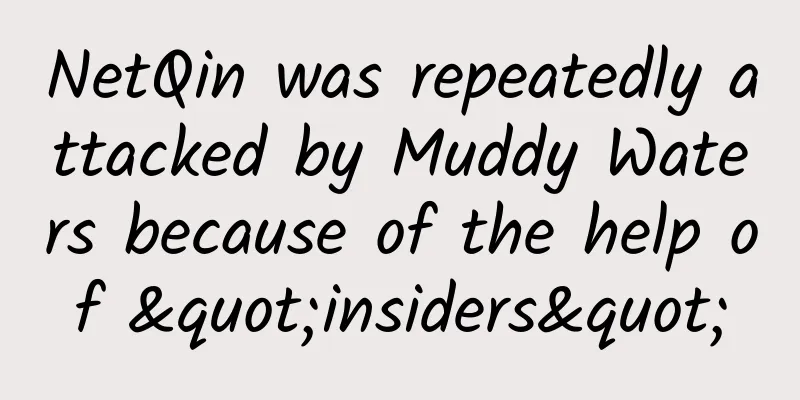Besides hot pot, what else can mushrooms be used for?

|
Produced by: Science Popularization China Author: Li Bo (Shaanxi Institute of Biological Agriculture) Producer: China Science Expo What good is it for a glutton to be satisfied? The only way to reward him is with poetry. This is a famous quote from Shi Shu, a Song Dynasty scholar, praising mushrooms more than a thousand years ago. When it comes to mushrooms, people can't help but associate them with eating. Although they have always been regarded as vegetables by the public, mushrooms are not plants, but fungi. Moreover, these parts that we usually regard as food are not the whole of mushrooms. Underground where they grow (or in rotten wood), there is a network of hyphae composed of countless cells, which is called mycelium. The mushrooms we eat are the fruiting bodies of fungi, but this is only a very small part of them. (Image source: Wille, Emilio & Bento, Clovis RC. (2021). Filamentous Fungi Growth as Metaphor for Mobile Communication Networks Routing. Advances in Electrical and Computer Engineering. 21. 10.4316/AECE.2021.02007.) 1. Introduction to Mycelium Mycelium is the basic structural unit of fungi. It is generally tubular, has a fixed cell wall, is mostly colorless and transparent, and has a diameter of 1-30μm. It is responsible for absorbing, transporting and storing nutrients. In order to obtain nutrients, fungi will continue to radiate outwards during growth, penetrate into the cracks of soil and rotten wood, and continue to branch, eventually forming a huge mycelium network underground. Mycelium seen with the naked eye (above) and mycelium observed under an electron microscope (below) (Image source: Wikipedia) The main components of mycelial cell walls include chitin, glucan and protein . The outer layer of the cell wall is mainly protein and glucan, while the inner layer is chitin in the form of microfibers interwoven with other polysaccharides to form a strong skeleton. The tensile strength of chitin is comparable to that of carbon fiber, and it has excellent thermal stability and flame retardancy . And glucan, like a binder, can help the mycelial network to bind more closely to the matrix on which it grows, so as to better absorb nutrients from it. It is precisely because of these outstanding characteristics that mycelium has gradually entered the field of vision of materials scientists. The structure of mycelium (Image source: Reference [2]) 2. Small mycelium has great use In view of the structure and characteristics of mycelium, some innovative scientists have tried to apply it to the research and development of new biomass materials and to various design fields. By establishing suitable culture conditions, the mycelium of mushrooms gradually grows into a single tubular mycelium, and then through artificial induction, the tubular mycelium is intertwined and aggregated into a dense sheet structure. Since the entire formation process is achieved through the natural growth of mycelium without the need for chemical synthesis, this material is also called a bio-assembly material . The growth of Ganoderma lucidum mycelium showed different structural characteristics after adding different cellulose substrates (Image source: Reference [2]) At present, mycelium materials mainly include pure mycelium materials and mycelium composite materials. Pure mycelium materials exist in a flat form and are grown naturally from pure mycelium. Its texture is similar to animal leather and has been widely used in clothing, shoes and hats processing and other fields. In recent years, many internationally renowned luxury brands have successively launched products made of mycelium leather. Compared with raising livestock to produce leather, the carbon emissions of mycelium leather production are much smaller than the former. It is for this reason that the keen luxury giants have seen the huge business opportunities hidden in it. After all, environmental protection is the most concerned and popular fashion element nowadays. As the research continues to deepen, scientists have discovered that pure mycelium materials have interactive properties that can be printed, dyed, and stitched. At the same time, the mycelium can continue to grow on other fabrics to further form mycelium composite fabrics. Moreover, this material has resistance to pulling because the mycelium is entangled with each other and compressed. When they are treated with glycerin, their stretchability can be further enhanced to achieve rubber-like properties. This foam rubber produced using mycelium has many advantages such as lightness, breathability, flame retardancy, and waterproofness. It has been used in household items for infants and young children and has become a commercial product in North America. Packaging foam material (a), packaging board (b), leather-like material (c) and flexible sponge material (d) made from mycelium (Image source: Reference [5]) In addition, scientists have found that by mixing pure mycelium leather materials with natural or synthetic polymers to form composite materials, their fatigue resistance and wear resistance can be further improved. Such materials are soft and wear-resistant. What is even more valuable is that as pure natural products, they have excellent bioaffinity and will not irritate human skin or cause allergic reactions. They have a very high safety of use, so they are made into medical and beauty products such as facial masks, eye masks and makeup puffs, and have huge market application potential. Compared with pure mycelium materials, mycelium composite materials mainly exist in a three-dimensional form. They are composite materials formed by combining mushroom mycelium with agricultural waste such as rice husks, corn cobs, straw, and sawdust. In the process of mixed cultivation with these wastes, the mycelium decomposes the waste to obtain nutrients for its own growth, while closely combining with the waste as a support for its own growth. Characteristics of mycelium composite materials at different magnification scales: surface characteristics at naked eye scale (a); longitudinal section characteristics at naked eye scale (b); longitudinal section characteristics after 5mm scale magnification (c); mycelium characteristics after 50uM scale magnification under scanning electron microscope (d) (Image source: Reference [4]) Depending on the cultivation time, the color of the material will change from white to brown. The color difference is mainly caused by the amount of mycelium growing on the surface of the material. Generally, the whiter the color, the more vigorous the mycelium growth. The biggest advantage of this composite material is its super plasticity . Depending on the growth mold, it can be made into any shape. Moreover, this material combines the characteristics of mycelium and substrates such as plant fibers and straw. It has excellent properties such as light weight, strong compression resistance, heat insulation, sound insulation and noise reduction, flame retardancy and waterproofness. Therefore, mycelium composite materials are mainly used to make cushioning packaging, building bricks, sound insulation wall panels, lampshades, tables and chairs, and interior decoration materials for automobiles. Various product packaging made of mycelium composite materials (Image source: Reference [6]) More importantly, this composite material is naturally biodegradable and recyclable, and can also effectively solve the problem of agricultural waste recycling. Imagine that in the near future, if we want to build a base for human activities on the moon or Mars, we don’t need to consider the expensive and laborious method of using spacecraft to transport building materials from Earth into space. We can use mushroom mycelium and simple matrix materials to quickly and efficiently produce the building materials we need in the space station. The "Growth Pavilion" (a) using mycelium materials as building surface materials and the spatial tree-shaped branching structure built with mycelium bricks (b) displayed at the Dutch Design Week in 2019 (Image source: Reference [8]) 3. Not only is it easy to use, mycelium is also delicious In addition to using mycelium materials to replace leather, packaging, construction and other fields, scientists have also applied it to the research of replacing protein foods . Based on the technology of pure mycelium leather materials, a new type of mycelium artificial meat was born. A company in the United States produces mycelium artificial bacon. Compared with artificial meat made from bean protein, it not only has no beany smell, but also tastes closer to real pork. In addition, its nutritional value is higher than pork. It is not only easy to digest and absorb, but also rich in more vitamins and minerals. Therefore, it is favored by more and more vegetarians. In the future, during the long journey of interstellar exploration, we will no longer have to endure the unpleasant smell in narrow and closed cabins to raise livestock and poultry just to eat a bite of meat, just like the sailors in the Age of Exploration in Europe in the 14th century. The use of mycelium technology to make artificial meat substitutes will be a clean and efficient method. In addition, even on Earth, this technology still has great prospects. Compared with traditional livestock and poultry farming, the carbon emissions generated by the use of mycelium technology to make the same amount of artificial meat are only a few tens of times that of the former, and it can greatly reduce the use of land and water resources. Today, when environmental and climate issues are becoming increasingly prominent, the emergence of this technology is of great significance to the sustainable development of mankind. Conclusion Whether it is mycelium leather, artificial meat or building materials, the production process can be highly controllable. It can not only produce products of uniform specifications on a large scale, but also adjust the thickness, weight, feel, etc. of the finished products to form differentiated customization. This is also an important reason why this technology has flourished in just 20 years since its invention. In addition, due to the differences in the main components of chitin, glucan, etc. in the mycelial cells of different mushrooms, scientists can select different types of mushrooms as cultivation objects according to different needs in the production of mycelial materials. For example, using the mycelium of edible mushrooms such as Pleurotus ostreatus to produce artificial meat can effectively avoid food safety risks. Using highly lignified mushrooms such as Ganoderma lucidum and Polypore to produce rubber materials and building materials can significantly improve their strength and toughness. In nature, there are more than 20,000 known large fungi that we call mushrooms. These rich species resources provide almost unlimited possibilities for the production and application of mycelial materials. I believe that soon, all kinds of mycelium materials products will enter thousands of households, making our lives more colorful. No matter in which era, there are always many unexpected disruptive technological innovations that create a bright future for us humans. References: 1. Islam MR, et al. Morphology and mechanics of fungal mycelium. Scientific Reports, 2017,7(1):13070 2. Muhammad Haneef, et al. Advanced Materials From Fungal Mycelium: Fabrication and Tuning of Physical Properties. Scientific Reports, 2017, 7: 41292 3. Mitchell Jones,et al. Thermal Degradation and Fire Properties of Fungal Mycelium and Mycelium - Biomass Composite Materials. Scientific Reports, 2018,8: 17583 4. MRIslam, et al. Mechanical behavior of mycelium-based particulate composites. J Mater SCI, 2018, 53:16371-16382 5. Wan Jie et al. Current status and prospects of mycelium-based plastics. Science and Technology Review, 2019, 37(22): 105-120 6. Liao Yaxin et al. Research progress of mycelium biomaterials based on design applications. Journal of Beijing Institute of Fashion Technology (Natural Science Edition), 2022, 42(02): 93-102 7. Tang Xiaohua et al. Research progress on the application of mycelium of edible and medicinal fungi. Journal of Edible Fungi, 2021, 28(4): 116-122 8. Zhang Zheyu et al. Research on mycelium composite materials and their application in architecture. Architecture and Culture, 2022, 09(04): 13-15 9. Zhao Zhicheng et al. Research progress on preparation and application of mycelium composite materials. New Chemical Materials, 2023, 51(03): 73-78 10. Yan Wei et al. Research status of biomass insulation materials based on mycelium. Forest Products Industry, 2019, 56 (12): 34-37 |
>>: Are purebred cats more likely to get heart disease? Parents of furry children must read this!
Recommend
Every "she" is shining!
She is a persistent scientist She is an astronaut...
「Guangzhou seo」 How much does it cost to do website SEO ranking in Guangzhou?
This mainly depends on what keywords you need. Th...
Weibo traffic | What is Weibo real-time account? What is it used for and how to raise it?
Why did you think of sharing this today? Because ...
AnySDK beauty programmer Huang Yanli: Women's life and men's work
At the end of November 2014, on an ordinary after...
How to fine-tune the operation of private domain traffic in the education and training industry?
Recently, experts in the education and training i...
With these tools, you can easily create high-conversion landing pages even if you don’t know design or code!
The landing page is an important part of relation...
Can you eat the soil on the moon? What would happen if you ate it?
In June this year, an American auction house is a...
The TV industry is moving towards segmentation: games become the biggest active variable
Since the development of China's television in...
Comment | Wild boars are planned to be removed from the "Three Haves" list, and wildlife protection must also keep pace with the times
As the ecology recovers, wild boars may no longer...
How to develop a complete user growth system architecture?
If you learn the right principles in the field of...
A fatal obstacle! Don’t delay if the elderly or children have these symptoms!
Audit expert: Qu Bo Chief Physician of General Su...
Special: How many stunning mountains and rivers are there in China?
How many colors does the Chinese land have? That&...
Quanzhou SEO Training: What aspects should a good website SEO optimization include?
A good website SEO optimization should include th...
The competition among domestic mobile phone chips escalates: Who benefits the most from the marriage between "national" and Qualcomm?
Lingsheng Technology, a chip company that was est...
How to get a health code for returning home during the Spring Festival? Apply for health codes in various places in seconds on WeChat
[[380418]] Now it is very close to the Spring Fes...









